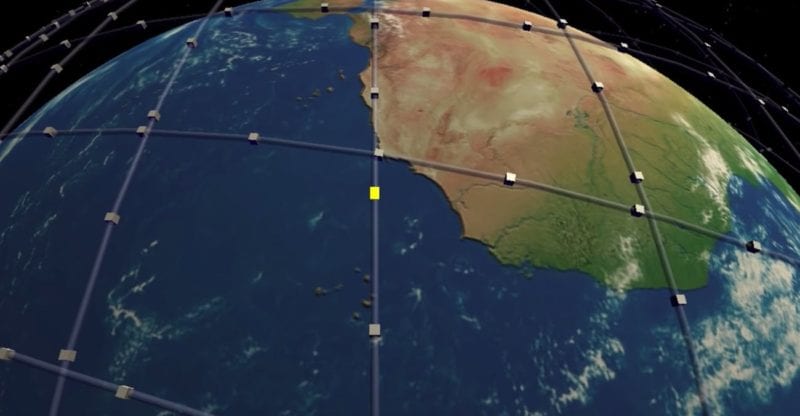Latest News

An artist’s rendition of SpaceX’s Starlink constellation proposal. Photo: Inverse
Today, the Federal Communications Commission (FCC) approved SpaceX’s request to fly more than 1,500 of its Starlink satellites at an altitude of approximately 342 miles (550 kilometers) — an orbit lower than before. The FCC also authorized SpaceX to slightly reduce the number of satellites in the constellation, and to include the use of Ku-band gateway earth stations for fewer than 75 of these lower-altitude satellites. According to SpaceX, the lower orbit would help reduce latency so less satellites would be needed.
Earlier this year, SpaceX submitted an application to operate one million user terminals as well as its first six gateways to provide the necessary communications links back from the satellites to the global Internet. SpaceX intends to install sufficient gateway sites in the U.S. and around the world to ensure that the Starlink satellites have a visible gateway earth station with which they can communicate from all parts of their orbits.
Last year, SpaceX became the first U.S.-based company to be licensed by the FCC to operate a Non-Geostationary Orbit (NGSO) constellation of more than 11,000 satellites. In November 2018, the company was cleared to deploy 7,518 satellites, and in 2017, the company faced regulatory hurdles. SpaceX is targeting no earlier than May for launch of a Starlink mission.
“This approval underscores the FCC’s confidence in SpaceX’s plans to deploy its next-generation satellite constellation and connect people around the world with reliable and affordable broadband service,” said SpaceX Chief Operating Officer (COO) Gwynne Shotwell in a statement. “Starlink production is well underway, and the first group of satellites have already arrived at the launch site for processing.”
“The modified launch plan reduces the constellation size by 16 satellites down from 4,425 to 4,409,” said NSR Senior Analyst Shagun Sachedeva. “This really is not a significant change looking at the scale of the system and will not make a big impact on the CAPEX, the revenues, or the business case in general. The bigger change is the altitude — which will decrease the latency of the constellation but will also possibly require increasing cost/complexity either in the ground segment or in the satellite design to incorporate inter satellite laser link arrays, or both.”
Get the latest Via Satellite news!
Subscribe Now